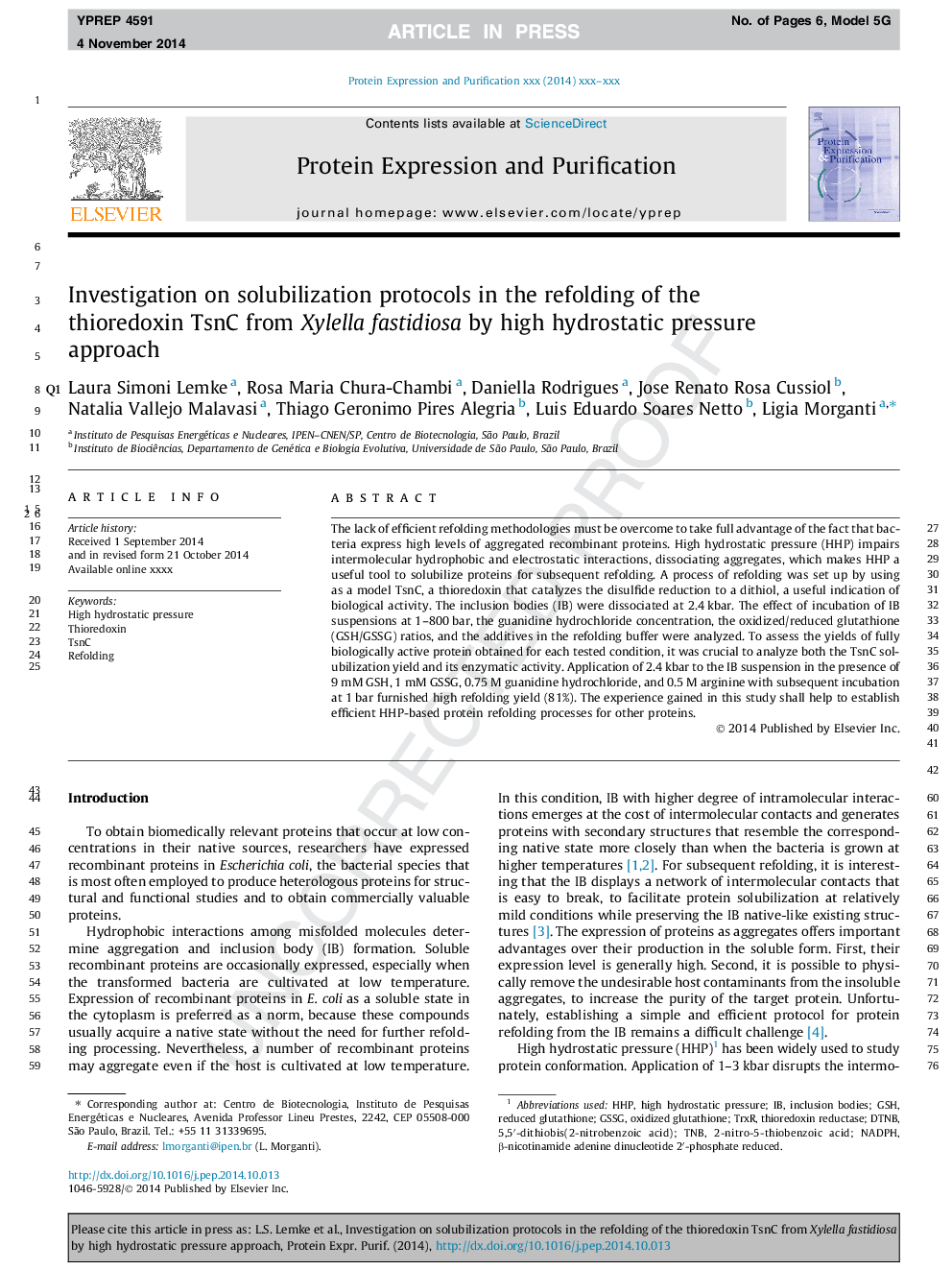| Article ID | Journal | Published Year | Pages | File Type |
|---|---|---|---|---|
| 8360412 | Protein Expression and Purification | 2015 | 6 Pages |
Abstract
The lack of efficient refolding methodologies must be overcome to take full advantage of the fact that bacteria express high levels of aggregated recombinant proteins. High hydrostatic pressure (HHP) impairs intermolecular hydrophobic and electrostatic interactions, dissociating aggregates, which makes HHP a useful tool to solubilize proteins for subsequent refolding. A process of refolding was set up by using as a model TsnC, a thioredoxin that catalyzes the disulfide reduction to a dithiol, a useful indication of biological activity. The inclusion bodies (IB) were dissociated at 2.4Â kbar. The effect of incubation of IB suspensions at 1-800Â bar, the guanidine hydrochloride concentration, the oxidized/reduced glutathione (GSH/GSSG) ratios, and the additives in the refolding buffer were analyzed. To assess the yields of fully biologically active protein obtained for each tested condition, it was crucial to analyze both the TsnC solubilization yield and its enzymatic activity. Application of 2.4Â kbar to the IB suspension in the presence of 9Â mM GSH, 1Â mM GSSG, 0.75Â M guanidine hydrochloride, and 0.5Â M arginine with subsequent incubation at 1Â bar furnished high refolding yield (81%). The experience gained in this study shall help to establish efficient HHP-based protein refolding processes for other proteins.
Related Topics
Life Sciences
Biochemistry, Genetics and Molecular Biology
Biochemistry
Authors
Laura Simoni Lemke, Rosa Maria Chura-Chambi, Daniella Rodrigues, Jose Renato Rosa Cussiol, Natalia Vallejo Malavasi, Thiago Geronimo Pires Alegria, Luis Eduardo Soares Netto, Ligia Morganti,
